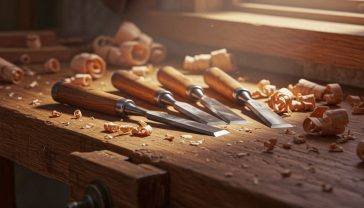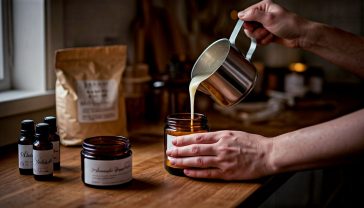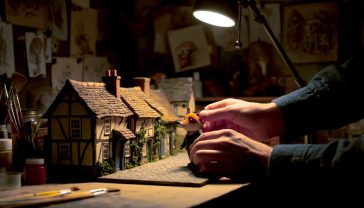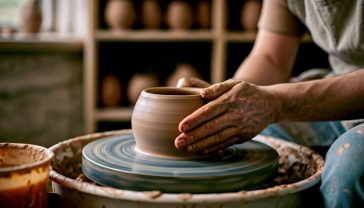AI Generated Art Is Getting Scarily Good Creative Revolution or a Digital Deception?
From Midjourney to DALL-E, AI art is getting scarily good. But is it real art? Explore the tech, the copyright debates, and the future of creativity.
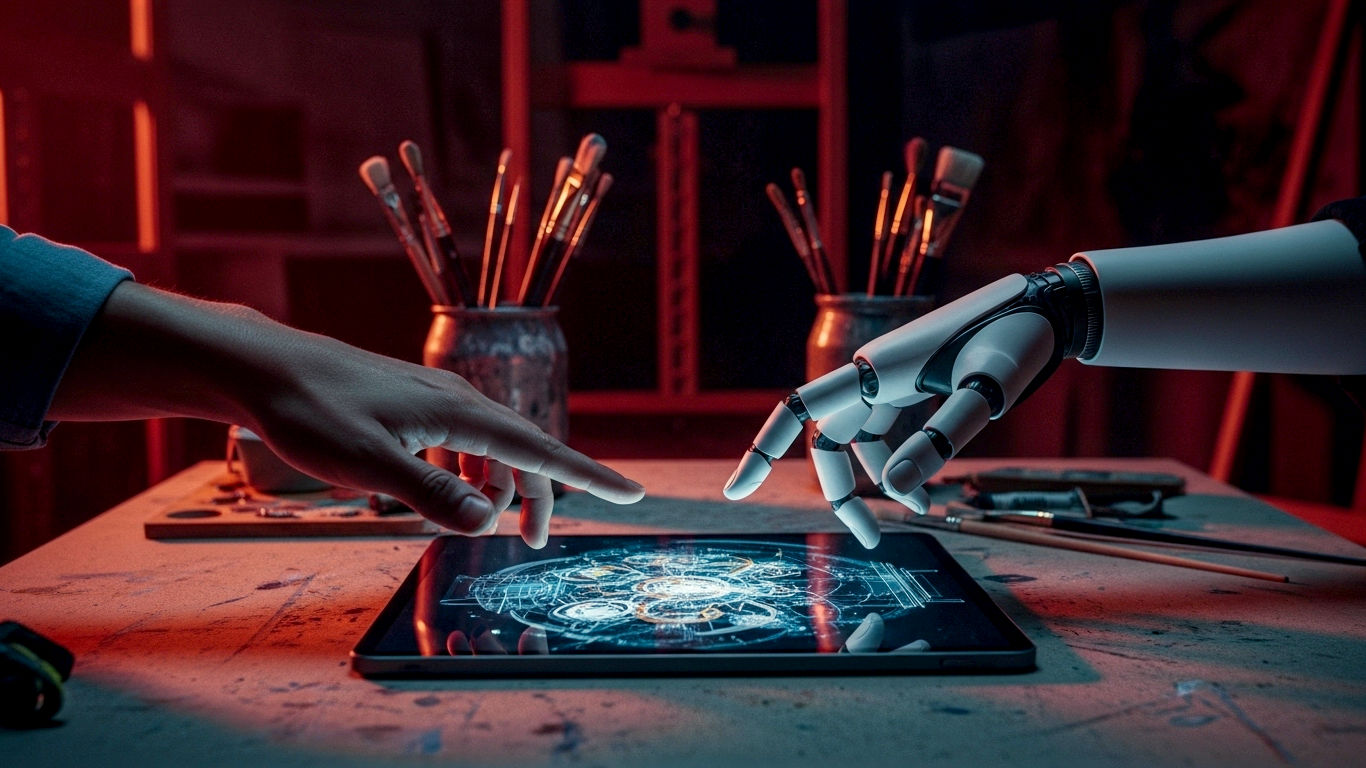
This post may contain affiliate links. If you make a purchase through these links, we may earn a commission at no additional cost to you.
It starts with a few words typed into a box. “A majestic fox in a tweed jacket, sipping tea in a foggy London alleyway, photorealistic.” Seconds later, an image appears. It’s not a photograph, nor is it a painting by a human hand. It’s something new. The fox’s fur is intricately detailed, the steam from the teacup curls into the misty air, and the faint glow of a gas lamp reflects in its eyes. It looks real—impossibly real. This is the world of AI-generated art, a technological marvel that has exploded from a niche corner of the internet into a global phenomenon. It’s a world where anyone can become an artist with a simple text prompt, creating breathtaking visuals that were once the sole domain of skilled painters, illustrators, and photographers.
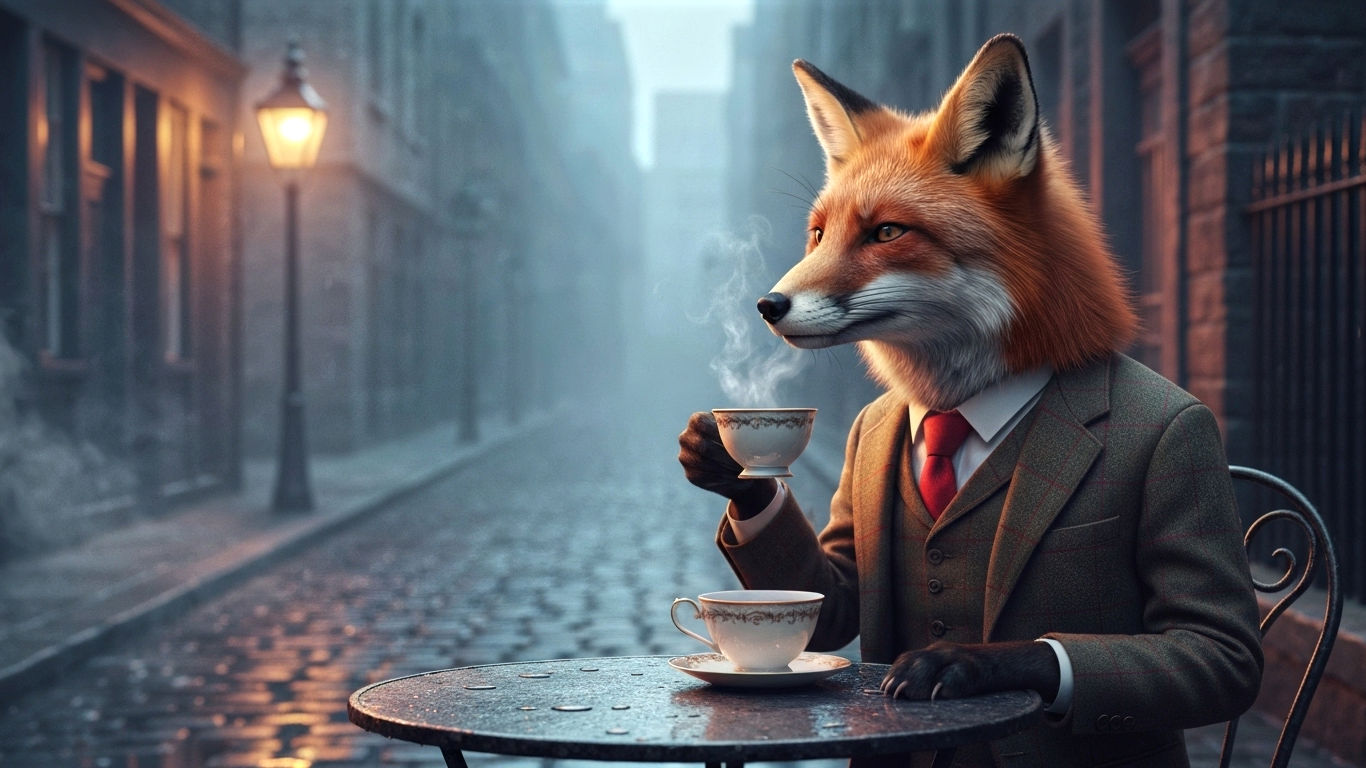
But as these AI creations become almost indistinguishable from human-made art, a wave of unease is growing. We’re left asking some big questions. What does it mean for art when a machine can create a masterpiece in moments? Is this a powerful new tool that will unlock human creativity, or is it a shortcut that devalues skill and passion? And as these tools get scarily good, are we witnessing the birth of a new art form, or are we accidentally erasing what it means to be an artist?
This guide will take you on a journey through the strange and fascinating world of AI art. We’ll explore how it works, where it came from, and the seismic impact it’s having on our culture. From the ethics of AI models trained on billions of online images to the artists in the UK already using this tech to push creative boundaries, we’ll uncover the good, the bad, and the downright weird. This isn’t just about clever software; it’s about the future of creativity itself. So, grab a brew, and let’s dive in.
What on Earth Is AI-Generated Art?
At its heart, AI-generated art is visual content—images, animations, videos—created by an artificial intelligence system based on human instructions. Think of it like giving directions to an incredibly talented, mind-bogglingly fast artist who has studied nearly every image ever posted on the internet. You don’t tell them every brushstroke to make. Instead, you give them a description, a prompt, and the AI uses its vast knowledge to bring that idea to life.
This isn’t like using Photoshop filters or a drawing app on a tablet. Those are tools that help a human create. AI art generators are different. They are the creators themselves, interpreting your words and generating something entirely new.
The Magic Box: How Does It Actually Work?
It might seem like magic, but it’s all down to some very clever technology. The systems that power most modern AI art generators, like Midjourney, DALL-E 3, and Stable Diffusion, are a type of AI called a diffusion model.
Let’s break it down with an analogy.
The Simplified Explanation: Rebuilding a Sandcastle
Imagine you have a perfect, detailed sandcastle. Now, imagine the tide slowly coming in, washing away the details bit by bit until all you have is a mound of noisy, grainy sand. That’s the first part of the process. The AI is trained by taking billions of real images (the sandcastles) and deliberately adding ‘noise’ (the tide) until the original image is completely unrecognisable. It does this over and over, learning exactly how an image dissolves into static.
Now for the clever bit. To generate art, the AI does this in reverse. It starts with a canvas full of random noise—the messy mound of sand. Then, guided by your text prompt (e.g., “a portrait of a robot knight”), it begins to remove the noise, step by step. Because it has learned how images fall apart, it knows how to put them back together. It sculpts the noise, gradually forming shapes, colours, and textures until the random static transforms into a coherent image that matches your description. It’s like an artist seeing a statue in a block of marble, except the AI is seeing a detailed image inside a field of digital noise.
The Detailed Explanation: Latent Diffusion Models
For those who want a bit more technical detail, the most popular models use a technique called Latent Diffusion. Instead of working with massive, pixel-heavy images from the start (which would require a colossal amount of computer power), they first compress the image into a much smaller, more manageable representation in a ‘latent space’. Think of this as creating a highly detailed, compressed summary of the image’s core concepts.
The diffusion process—adding and then removing noise—happens in this efficient latent space. The text prompt is also converted into a numerical format that the AI can understand, acting as a map to guide the denoising process. Once the AI has sculpted the latent summary into its final form, a separate part of the model, called a decoder, translates this summary back into the full-size, high-resolution image you see on your screen. This two-step process makes generating stunningly detailed images possible in seconds, not hours.
A Quick Trip Through Time: The surprising history of AI and art
While text-to-image generators might feel like they appeared overnight, the dream of creative machines has been brewing for decades. The story didn’t start with fancy apps; it began in university computer labs with clunky machines and big ideas.
The Early Pioneers (1960s-1970s)
Believe it or not, the first artist to use a computer to generate art wasn’t a Silicon Valley whizz-kid, but a British man named Harold Cohen. In the late 1960s, Cohen, already an established painter, began to wonder if the rules and processes of art could be captured in code. He created a computer program called AARON, which he spent decades teaching how to draw. AARON wasn’t generating images from text, but it could create original, abstract black-and-white drawings based on a set of rules Cohen programmed into it. It was groundbreaking stuff, proving that a machine could, in its own way, be creative.
The GANs Revolution (2014)
For a long time, progress was slow. AI could follow rules, but it couldn’t truly ‘imagine’ something new. That all changed in 2014 with the invention of Generative Adversarial Networks, or GANs. This was a huge leap forward.
GANs work by pitting two AIs against each other in a creative duel:
- The Generator: This AI tries to create a fake image (e.g., a portrait of a person who doesn’t exist).
- The Discriminator: This AI acts as a detective. Its job is to look at the image and decide if it’s a real photo or a fake created by the Generator.
At first, the Generator is terrible, and the Discriminator easily spots the fakes. But every time it’s caught, the Generator learns and gets a little better. The two AIs are locked in a constant battle, with the Generator trying to fool the Discriminator and the Discriminator getting better at spotting forgeries. After millions of rounds of this game, the Generator becomes so good that its creations are incredibly realistic. In 2018, a portrait created by a GAN, titled Edmond de Belamy, sold at Christie’s auction house for a staggering $432,500, marking the moment the traditional art world was forced to take notice.
The Rise of the Transformers and Diffusion (2020-Present)
GANs were clever, but they were often hard to control. The real explosion in AI art came with the development of new architectures, like Transformers (the ‘T’ in ChatGPT), which were brilliant at understanding the relationship between words and images.
This technology, combined with the diffusion models we talked about earlier, gave rise to the tools we see today. In 2021, a research lab called OpenAI unveiled the first version of DALL-E, a system that could generate wonderfully weird and creative images from text. It was followed by a flood of others, each more powerful than the last. Midjourney became known for its artistic, painterly styles, while Stable Diffusion, being open-source, allowed anyone to run and modify the technology on their own computers. The genie was out of the bottle, and creativity would never be the same again.
The Big Debate: Is It Really Art?
This is the question that sends artists, philosophers, and tech enthusiasts into a frenzy. When you type a prompt and a machine generates an image, who is the artist? Is it you? Is it the AI? Or is it nobody at all?
The Case for AI as a Tool
Many argue that AI art generators are simply the next evolution in artistic tools, no different from the camera, Photoshop, or a digital drawing tablet.
The Case Against AI as Art
On the other side of the argument, many believe that AI-generated images lack the essential human element that defines art.
There’s no easy answer here. It’s a debate that challenges our very definition of creativity. Perhaps the best way to think about it is that AI art isn’t trying to replace human art, but is instead becoming a new category of creativity altogether—something different, with its own rules, techniques, and aesthetic values.
The Elephant in the Room: Copyright, Ethics, and Stolen Art
This is where the conversation gets really heated. The beautiful images these AI models produce don’t come from nowhere. They are the result of training on vast datasets, most famously the LAION-5B dataset, which contains over five billion image-text pairs scraped from the internet.
This means the AI has ‘learned’ from the work of millions of artists, photographers, and creators, most of whom never gave their permission for their work to be used in this way.
The Training Data Controversy
Many artists feel betrayed and exploited. They see AI companies as multibillion-dollar operations that have effectively built their technology on the back of uncredited, unpaid creative labour. When you ask an AI to generate an image “in the style of Greg Rutkowski” (a popular fantasy artist whose work was heavily scraped for training data), the AI can replicate his distinctive aesthetic with eerie accuracy. This has led to accusations of style plagiarism on an industrial scale.
Artists are fighting back. Class-action lawsuits have been filed against major AI companies like Stability AI (the makers of Stable Diffusion) and Midjourney, accusing them of mass copyright infringement. The core legal question is whether training an AI on copyrighted images constitutes ‘fair use’ or ‘fair dealing’ here in the UK. Tech companies argue it’s transformative—the AI is learning from the images, not copying them. Artists argue that if their work is in the training data, their intellectual property has been used without consent or compensation.
Who Owns an AI-Generated Image?
The copyright question doesn’t stop with the training data. It also applies to the final output. Can you copyright an image you created with Midjourney? The legal landscape is still a murky mess and differs by country.
In the United States, the Copyright Office has repeatedly ruled that images created solely by an AI system cannot be copyrighted because they lack human authorship. You can, however, potentially copyright an image if there is significant human intervention after the initial generation (e.g., substantial editing in Photoshop).
In the UK, the situation is slightly different and, frankly, a bit dated. The Copyright, Designs and Patents Act 1988 has a peculiar clause stating that for a “computer-generated” work, the author is considered to be “the person by whom the arrangements necessary for the creation of the work are undertaken.” This could be interpreted to mean the person who wrote the prompt is the author. However, this law was written long before modern AI. For now, the legal ownership of AI art remains a massive grey area, creating uncertainty for both artists and businesses looking to use it commercially.
How AI Art Is Changing the Creative World (For Better and Worse)
The impact of AI art is already being felt across numerous industries, bringing both exciting opportunities and profound anxieties.
Positive Impacts and New Possibilities
Negative Impacts and Growing Fears
Getting Started: Your First Steps into AI Art Generation
Curious to try it for yourself? Getting started is easier than you might think. Here’s a quick rundown of the most popular platforms.
Midjourney
Perhaps the most famous AI art generator, known for producing highly artistic and often beautiful images.
- How it works: Midjourney operates through the chat app Discord. You join their server, type
/imaginefollowed by your prompt, and the AI delivers four image options in about a minute. - Best for: Fantasy art, painterly styles, and creating a specific, polished aesthetic.
- Cost: Subscription-based, with different tiers depending on how much you want to generate.
DALL-E 3
Developed by OpenAI, DALL-E 3 is praised for its ability to understand complex, detailed prompts and its skill at rendering text accurately.
- How it works: It’s integrated directly into the paid version of ChatGPT (Plus) and is also available for free through Microsoft Copilot (formerly Bing Image Creator). You just describe what you want in plain English.
- Best for: Illustrations, cartoons, and images that need to follow complex instructions or include text.
- Cost: Free through Microsoft Copilot, or included with a ChatGPT Plus subscription.
Stable Diffusion
This is the open-source powerhouse. It’s incredibly versatile but can have a steeper learning curve.
- How it works: You can use it through web services like DreamStudio or Leonardo.AI. For the more tech-savvy, you can download and run it on your own powerful home computer (you’ll need a good graphics card), giving you complete control and privacy.
- Best for: Photorealism, customisation, and experimentation. The open-source community has built thousands of custom models trained for specific styles (e.g., anime, vintage photos, architectural drawings).
- Cost: Varies. Web services often have free trials and subscription plans. Running it yourself is free, aside from the cost of the hardware.
Tips for Writing Great Prompts
- Be Specific: Don’t just say “a dog.” Say “a happy golden retriever puppy, running through a field of sunflowers at sunset.”
- Mention the Style: Add phrases like “oil painting,” “digital art,” “photorealistic,” “cyberpunk,” or “in the style of Vincent van Gogh.”
- Set the Scene: Describe the lighting (“dramatic lighting,” “soft morning light”), the camera angle (“wide-angle shot,” “close-up portrait”), and the mood (“eerie,” “joyful,” “melancholy”).
- Iterate: Your first prompt probably won’t be perfect. Tweak the words, add details, and regenerate until you get something you love. It’s a conversation with the machine.
The Future: Where Is This All Going?
The world of AI-generated art is moving at a breakneck pace. What was state-of-the-art six months ago is now standard. So, what’s next?
- Video and 3D Generation: The next frontier is text-to-video. Models like Sora from OpenAI are already showing the ability to create stunningly realistic, minute-long video clips from a simple text prompt. This will have a monumental impact on filmmaking, advertising, and content creation. Similarly, text-to-3D models will revolutionise game design and virtual reality.
- Personalised Models: In the future, you might have an AI model trained exclusively on your own art style. It could learn your aesthetic and act as a perfect creative assistant, helping you generate work that is uniquely yours.
- Regulation and Watermarking: As concerns about misuse grow, governments will inevitably step in. We can expect to see new laws around copyright, data transparency, and the use of AI in media. Tech companies are also developing invisible watermarks to help identify AI-generated content, though this is proving to be a difficult cat-and-mouse game.
We are standing at a crossroads. AI art is not a passing fad; it’s a fundamental shift in how we think about and create visual media. It’s a technology that is simultaneously awe-inspiring and terrifying, holding the potential to unlock untold creativity while also posing serious threats to artists’ livelihoods and our shared sense of reality.
The debate over whether it is ‘real’ art may ultimately be a red herring. The more important question is how we choose to use it. Will it be a tool for human expression, a collaborator that helps us reach new creative heights? Or will it become a machine for churning out content, devaluing skill and flooding our world with beautiful but empty images? The answer isn’t written yet. It’s being decided right now, in the prompts we write, the tools we build, and the conversations we have. And that’s a picture that we are all, collectively, helping to paint.
Further Reading
For those looking to explore this topic in more depth, here are some highly respected resources:
- The Alan Turing Institute: The UK’s national institute for data science and artificial intelligence, offering research papers and articles on the latest developments. https://www.turing.ac.uk/
- Creative AI Lab (Serpentine & King’s College London): An initiative exploring art, creativity, and AI, with a focus on artistic practice and critical thinking. https://serpentinegalleries.org/art-and-ideas/creative-ai-lab/
- Artforum International Magazine: A leading voice in the contemporary art world, often featuring critical essays on the intersection of art and technology. https://www.artforum.com/
- The Register: A British technology news and opinion website that provides sharp, often cynical, coverage of the AI industry. https://www.theregister.com/
- Ben’s Bites: A daily AI newsletter that provides concise summaries of the latest news and breakthroughs in the field. https://bensbites.co/


